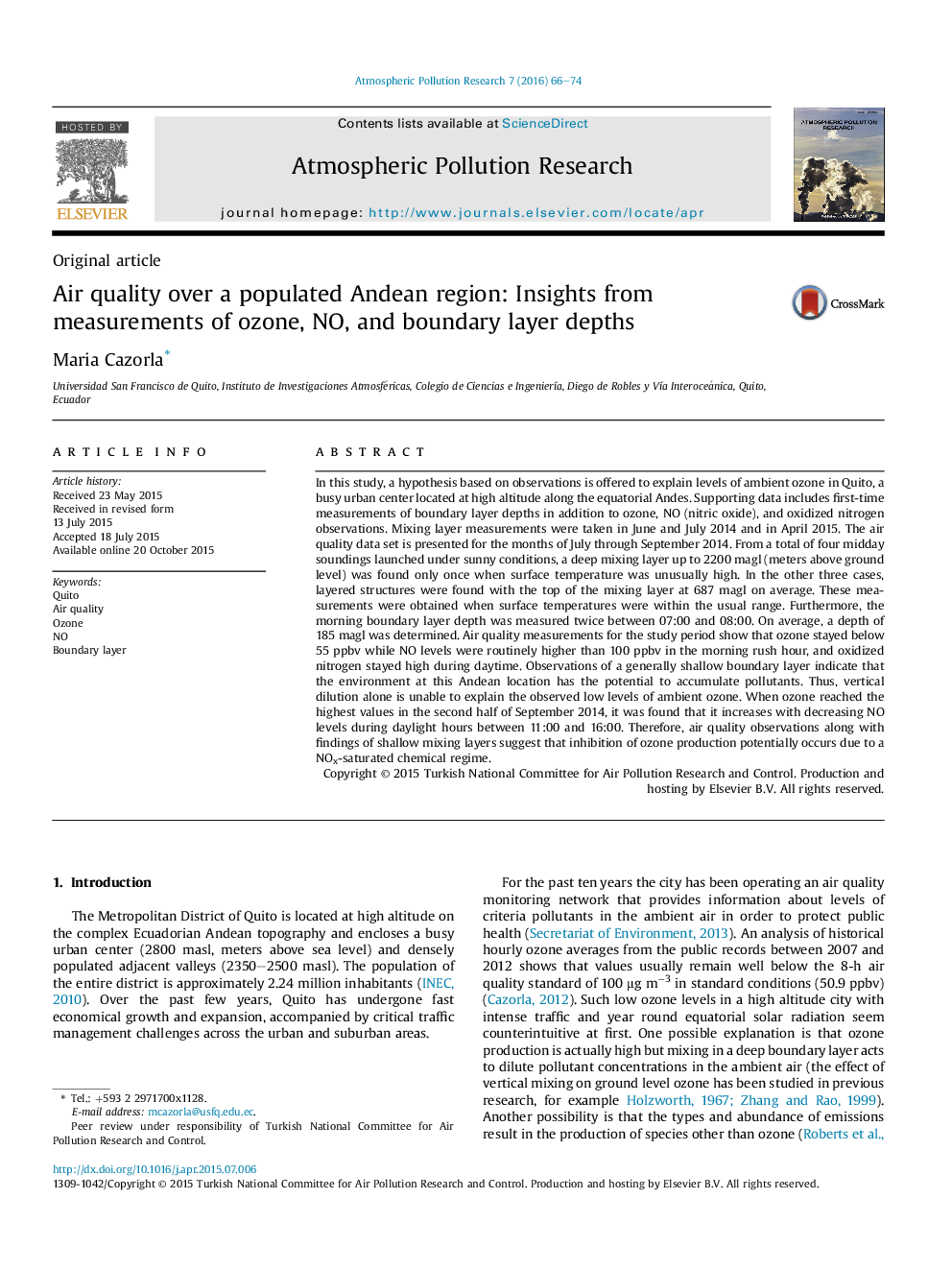| کد مقاله | کد نشریه | سال انتشار | مقاله انگلیسی | نسخه تمام متن |
|---|---|---|---|---|
| 4434707 | 1310523 | 2016 | 9 صفحه PDF | دانلود رایگان |
In this study, a hypothesis based on observations is offered to explain levels of ambient ozone in Quito, a busy urban center located at high altitude along the equatorial Andes. Supporting data includes first-time measurements of boundary layer depths in addition to ozone, NO (nitric oxide), and oxidized nitrogen observations. Mixing layer measurements were taken in June and July 2014 and in April 2015. The air quality data set is presented for the months of July through September 2014. From a total of four midday soundings launched under sunny conditions, a deep mixing layer up to 2200 magl (meters above ground level) was found only once when surface temperature was unusually high. In the other three cases, layered structures were found with the top of the mixing layer at 687 magl on average. These measurements were obtained when surface temperatures were within the usual range. Furthermore, the morning boundary layer depth was measured twice between 07:00 and 08:00. On average, a depth of 185 magl was determined. Air quality measurements for the study period show that ozone stayed below 55 ppbv while NO levels were routinely higher than 100 ppbv in the morning rush hour, and oxidized nitrogen stayed high during daytime. Observations of a generally shallow boundary layer indicate that the environment at this Andean location has the potential to accumulate pollutants. Thus, vertical dilution alone is unable to explain the observed low levels of ambient ozone. When ozone reached the highest values in the second half of September 2014, it was found that it increases with decreasing NO levels during daylight hours between 11:00 and 16:00. Therefore, air quality observations along with findings of shallow mixing layers suggest that inhibition of ozone production potentially occurs due to a NOx-saturated chemical regime.
Journal: Atmospheric Pollution Research - Volume 7, Issue 1, January 2016, Pages 66–74
